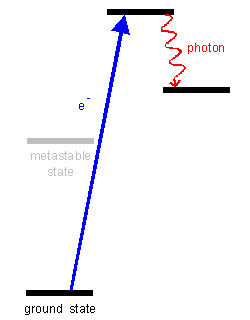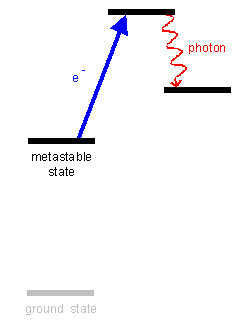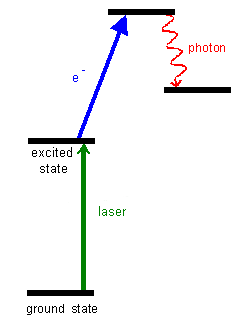| |
Excitation of Ground-state Atoms/Molecules

- Near-UV / Visible Monochromator System
- This System is used to study excitation from the ground state of atoms and molecules
in the spectral range of 250 to 1000 nm. A 1.26 meter monochromator combined with a
photo-multplier tube (PMT) is used to detect the fluoresence the atoms emit as they decay.
- Fourier Transform Spectroscopy (FTS) System
- This System is used to study excitation from the ground state of atoms and molecules
in the spectral range of 850 to 5000 nm. A Fourier Transform Spectrometer along with a
variety of infared detectors are used on a system similar to the Visible system above.
Excitation of Atoms in Metastable/Excited States

- Hollow Cathode Metastable Atom Source
- This system is used to study excitation out of metastable states. It uses
a hollow cathode discharge to produce the metastable atoms.
- Fast Beam Metastable Atom Source
- This system is used to study excitation out of metastable states. It uses
charge exchange between a fast ion beam and a cesium vapor to produce the metastable atoms.

- Magneto-Optical Trap(MOT) Experiment
- This experiment is used to study ionization and total scattering cross sections of
alkali atoms trapped in a MOT.
- Second Generation Trap Experiment
- The laser excited atoms in the MOT are used as the target in this experiment to
measure the cross sections for electron-excitation out of the excited levels of atoms.
back to home page
|




